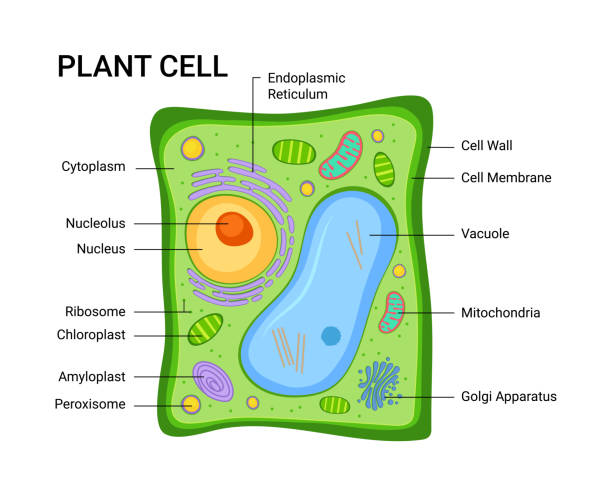Plants, similar to all other living beings, are composed of cells. The cells present in plants are called plant cells. They are the basic unit of life for plants. Different parts, types, and structures are involved in plant cells.
Plant cells are not only important for living organisms, but they are also valuable commercially. To know more about plant cells, plant cell diagrams, and so forth, let us read on.
Definition of Plant Cell
Plant cells are eukaryotic cells and the basic unit of life in plants. These cells in plants are responsible for carrying out fundamental functions in organisms of the kingdom Plante. Several plant cells compose plant tissues that go to create organs. These organs perform particular functions with a true nucleus and organelles.
What is Plant Cell?
In simpler words, the cell of any plant is referred to as a plant cell. English scientist Robert Hooke first recognized the phenomenon of plant cells. Plant cells can be called eukaryotic cells, signaling the presence of a membrane-bound nucleus and cell structures (called organelles).
Plant cells and animal cells are both eukaryotic cells, yet they are different from one another. One distinctive factor that distinguishes the two is the cell wall surrounding the cell membrane in plant cells. You may also cite the presence of chloroplasts and large vacuoles to distinguish a plant cell.
Structure of Plant Cell
In other words, what constitutes an ordinary plant cell? There are several components of cells present in every plant. These components help plant cells to perform their functions. The structure of a plant cell also sustains the life of a plant.
- Cell Wall
The walls of plant cells perform multiple functions that ensure the survival and growth of a plant. The cell wall is primarily composed of cellulose and surrounds the cell membrane. It mainly serves mechanical and structural purposes in a plant. Ordinarily, a cell wall protects a plant cell from mechanical stress and provides form and structure.
2. Cell Membrane
Surrounded by the cell wall, the cell membrane of a plant cell is the gatekeeper. It is responsible for the regulation of specific substances in a plant cell. In other words, a cell membrane looks after the entry and exit of substances.
3. Organelles
In the literal sense, organelles mean little organs. The structure of an organelle inside a plant cell is surrounded by lipid layers. A plant is composed of organelles that can be divided into two types; membrane-bound organelles and non-membrane-bound organelles. Examples of membrane-bound organelles include;
- Plastids
- Nucleus
- Mitochondria
- Golgi Apparatus
Examples of non-membrane bound organelles include;
- Ribosomes
- Vault
- Proteasome
- Stress Granule
Several other components exist that constitute the structure of a plant cell, such as cytosol, cytoplasmic structures, etc.
Types of Plant Cell
Plant cells are of different types. Several types of plant cells are commonly found in matured plants. Specific plant cell types perform distinct functions which distinguish them from each other.
- Meristematic cells
Meristematic cells are the stem cells of a plant. The primary function of Meristemic plant cell types is to give rise to other plant cell types. Cells of meristem lead to the composition of meristematic cells.
- Parenchyma cells
Parenchyma cells of leaves are the location where all essentials organelles occurring in green tissues are concentrated. A parenchyma plant cell is responsible for leaves production, cell metabolism, organic storage, etc. They are, in comparison to other types of plant cells, thin and flexible in nature.
- Collenchyma cells
Collenchyma cells come in function in the absence of a hardening agent. These cells provide support to the plant in the face of restraining growth. The Collenchyma plant cells are hard and rigid in nature and lack a secondary cell wall.
- Sclerenchyma cells
Similar to Collenchyma cells, Sclerenchyma cells provide support to the plant. Sclerenchyma cells are more rigid in nature when compared to other cells because of their thick wall. Moreover, these cells usually die in the maturity of a plant.
Plant Cell Diagram
Plant cell resembles a rectangular shape, and it is typically larger than that of an animal cell. Organelles that we observe on the plant cells occur in all green tissues of the plant.
With the help of a plant cell diagram, we can see where each component is located. The various structures that constitute a plant cell are denoted in a plant cell. The difference between plant cells from other types of cells can also be made clear with the help of such a diagram.

Functions of Plant Cell
Plant cells are vastly important for the sustenance of plant life. The primary function of a plant cell is to carry out the process of photosynthesis. The chloroplasts of a plant cell are the location where photosynthesis occurs. Plant cells also aid in transporting water and nutrients to different parts from the roots of a plant.

